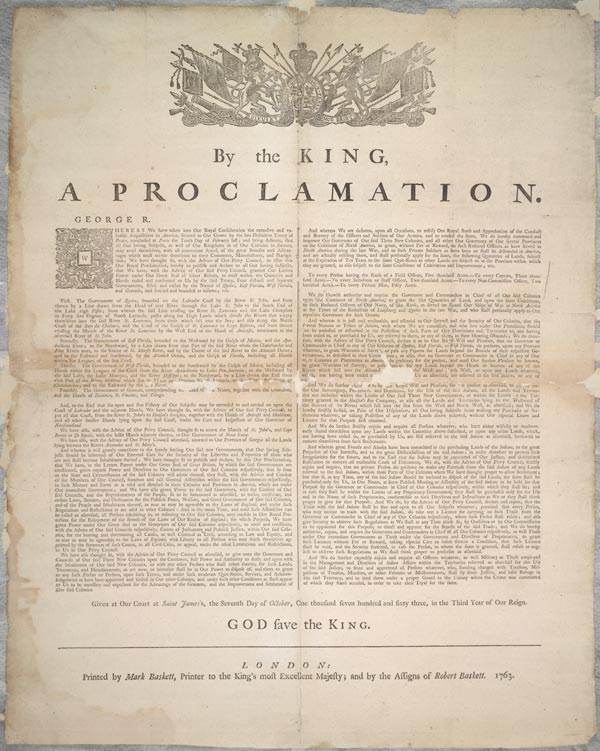Government Publications
Legislation
Reference
Royal Proclamation, 1763, University of British Columbia
The Royal Proclamation is a document that set out guidelines for European settlement of Aboriginal territories in what is now North America. The Royal Proclamation was initially issued by King George III in 1763 to officially claim British territory in North America after Britain won the Seven Years War. In the Royal Proclamation, ownership over North America is issued to King George. However, the Royal Proclamation explicitly states that Aboriginal title has existed and continues to exist, and that all land would be considered Aboriginal land until ceded by treaty. The Proclamation forbade settlers from claiming land from the Aboriginal occupants, unless it has been first bought by the Crown and then sold to the settlers. The Royal Proclamation further sets out that only the Crown can buy land from First Nations. Most Indigenous and legal scholars recognize the Royal Proclamation as an important first step toward the recognition of existing Aboriginal rights and title, including the right to self-determination.




